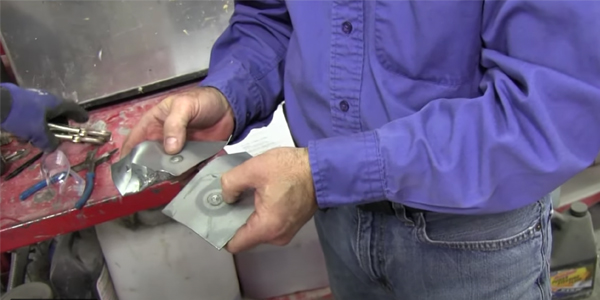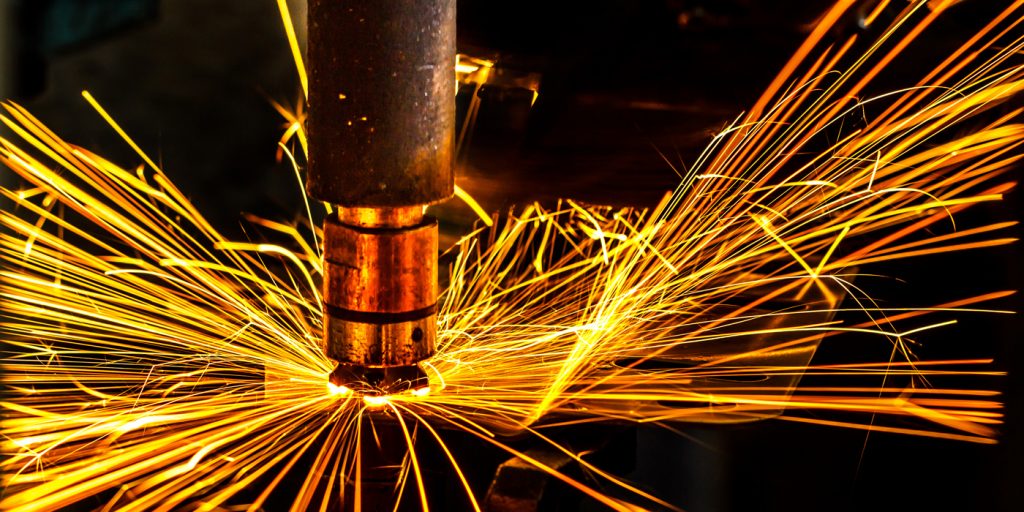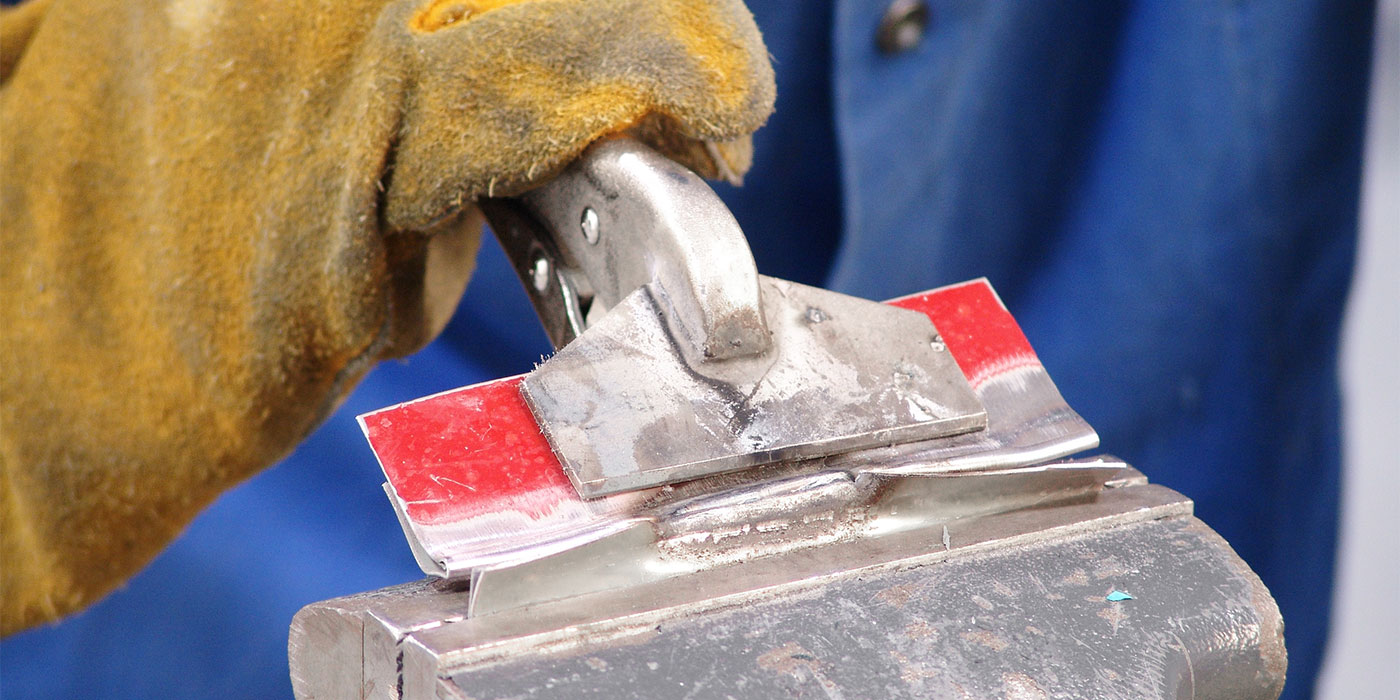Ever hear the story about the welding instructor who tells his class, “Raise your hand if you think you’re a great welder.” All 10 of the students raise their hands. Then, he has them do some hands-on welding and then destructively tests the welds. After seeing the results, the instructor again tells the class to raise their hands. This time, only two hands are raised.
You may think your technicians are good welders, but are they? How do you know? With the recent COVID-19 crisis, were you able to keep all of your technicians? Are you working with new technicians? Do you need to rehire new staff? How do you spot a technician who has been properly trained? Take a look at your current staff, do you provide them with regular training? Are destructive weld tests performed on similar parts prior to each and every weld? Are your welding machines maintained on a regular basis? Do your techs look up OE repair information and recommendations? Otherwise, how would they know what materials the vehicle is made of and what welding method is recommended? Are you willing to take on the liability that comes with a failed weld? Or a failure to follow the automaker’s recommended repair procedures? One needs to look no further than the John Eagle lawsuit to know how important it is to follow OE guidelines.
Heat
More and more, automakers are requiring welding methods that minimize heat and reduce the heat affect zone (HAZ). That’s the theme today as more and more vehicles feature metals where too much heat can negatively impact their structural integrity. These metals include high-strength steel (HSS), ultra-high-strength steel (UHSS), boron alloys and more.

The HAZ on UHSS weakens its properties and can create weak spots or even crush zones in areas where they should not be. With many of the new engineered steel applications, much of the strength and properties can be destroyed at fairly low-heat temperatures, compromising vehicle integrity. Heat used incorrectly or technicians not following corrosion protection procedures while welding, after welding or using any heat application will undermine the vehicle’s integrity – if not from the heat itself, then over time from corrosion issues. Diligence in watching or placing quality control procedures in a shop is not just a thought but a requirement. Where heat may be allowed by the OEM, technicians must monitor how much and how long the heat may be used. Adhering to all OE recommendations is the only process to follow.
Let’s review some welding methods that are becoming more and more recommended by OEMs.
MIG Brazing
MIG brazing fills the need for a strong bond with less heat. MIG/MAG steel welding uses heat to melt base metals and fuse them with filler wire. This melting creates a large HAZ, which is where many metals are compromised. Depending on the metal being welded, steels melt at around 3,000 degrees Fahrenheit, or 1,650 degrees Celsius. These temperatures are necessary to fuse metals. Add to it the use of low-power 110-volt welders, and the radiating heat creates a large heat signature where the HAZ extends away from the weld zone. Although the weld is strong, the heat and corrosion damage is created further out. This changing of the steel properties away from the weld becomes a large problem on UHSS in that a collapse zone could possibly be created where none should be. Also, the corrosion properties would be compromised.
MIG brazing has a much lower temperature signature, or HAZ, due to the difference in heat used during brazing. MIG/MAG welding of steels is a fusion process of melting metals. MIG brazing is an adhesion process and uses heat as low as 1,940 degrees Fahrenheit. Brazing does not melt the base metals, only the filler wire. The filler wire flows in the low heat and settles onto the surface or in between metals. This surface area, or footprint, is quite large in comparison to a weld and gives the brazing process the strength to work. The copper-silicon bronze filler wire flows with heat and has incredible surface tension ability once cooled.
This lower heat process limits damage to HSS and UHSS steels. MIG brazing allows the bonding of HSS and UHSS where squeeze-type resistance welding (STRSW) won’t reach. When reading some manufacturers’ requirements on MIG brazing, you’ll see the statement, “Use MIG brazing where STRSW cannot reach.” MIG/MAG plug welds are not an option. These statements stress the need for training and education on vehicle joining processes for welding and/or adhesives required.
MIG brazing has less of an effect on galvanized steel, allowing steel to maintain much of its corrosion protection properties. This alone is a significant improvement to the longevity of the repair. Add in the technique of brazing, and the negative effects of heat are further reduced as compared to welding. Training on how MIG brazing works and how to use techniques is a must for any and all technicians to know. Procedures for corrosion protection of all welds and braze joints is also critical to technicians.
Spot Welding
Spot welding (or STRSW) is a type of electric resistance welding used to weld various sheet metal products, through a process in which contacting metal surface points are joined by the heat obtained from resistance to electric current.
A squeeze-type resistance spot welder creates spot welds by creating heat very quickly, while at the same time applying pressure at the weld. This is done incredibly fast so as not to create heat that will expand and negatively affect the surrounding steel’s mechanical properties. If the surrounding steel is compromised, then the weld is weakened in terms of function and strength. It could also cause corrosion issues or hot spots. These concerns are normally associated with MIG/MAG plug welds, as STRSW creates welds so quickly that these concerns are generally mitigated.
Weld Bonding
We have seen STRSW for years. It’s the welding preferred by most automakers for many reasons. Now, add adhesives to the mix. When we combine the two processes, the advantages increase greatly. STRSW welding through the adhesives that are applied between the panels first offers some remarkable advantages. Shops not using this procedure where called for in repair procedures are missing the big picture and possibly exposing themselves to a warranty as well as a liability situation.
STRSW Equipment
You’ve heard that today’s vehicles are not your father’s vehicles. Today’s welders are also not your father’s. Many of them are more technologically advanced, “smart” and easier to use.
Many can not only auto detect the panel thickness and metal type, but also automatically set the required weld power, weld time and tip pressure. If you have more than one person welding at your shop, they can save their individual settings in the welder and retrieve them at the push of a button when ready to weld again. One company has a welder that can deliver training right to the technician through the machine itself via a training video on an LCD screen. Many having multi-functions on each machine. No longer is a welder just for steel welding only. The days of bulky, heavy heads that techs struggle to use and access hard-to-reach areas is changing. If your shop doesn’t have one of these welders yet, you’re falling behind and also possibly not able to do the welding an OEM requires.
For those who don’t see the value in shelling out big bucks for more capable welders, consider that it’s not just the weld quality that’s better; the attitude and morale in a shop also improves, which is priceless.
This is just a short recap of what is needed and required for yesterday’s, today’s and tomorrow’s vehicles. Each process defined would take hours to detail and train. Seek out your local vendors and get information as well as training. Using a company to implement quality controls in your shop can also be priceless as well as eye-opening.














